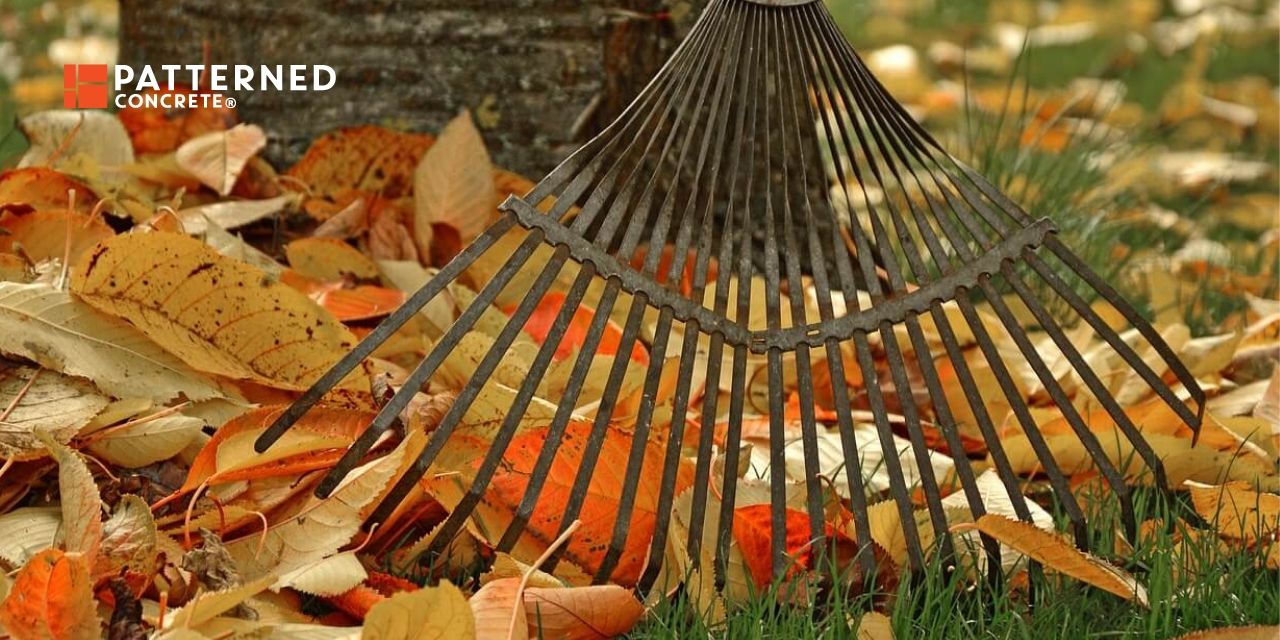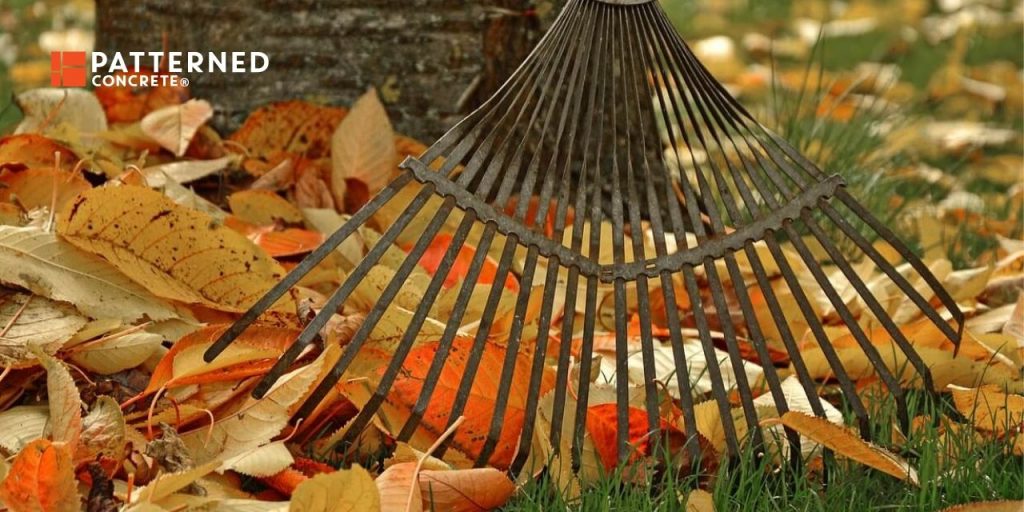
The leaves start to change color and there’s a tiny bit of a nip in the air. Pumpkin-flavored everything starts to appear. Children return to school. Night falls earlier. Yes, fall is upon us and it’s loaded with so much unique charm. At the same time, it also brings a lot of yard work to do!
Taking care of these chores will help keep your garden, lawn, patio, and even your house itself in good shape. It may take some effort, but it pays off! So let’s look at some tasks to do before the first snowflakes fall.
Rake Leaves
Cleaning up fallen leaves may be the duty associated most with fall. It may even have an element of fun, especially if your children or dogs love to jump in the deep piles of orange, red, and yellow leaves. But at the same time, it’s a lot of work. Sometimes, you even have to repeat it several times.
This is an important task to take care of. Leaves block sunlight and air. They can also prevent needed moisture and air from reaching your grass and garden plants. At the same time, they can trap too much moisture below them, which can lead to mold and mildew as well as freezing damage.
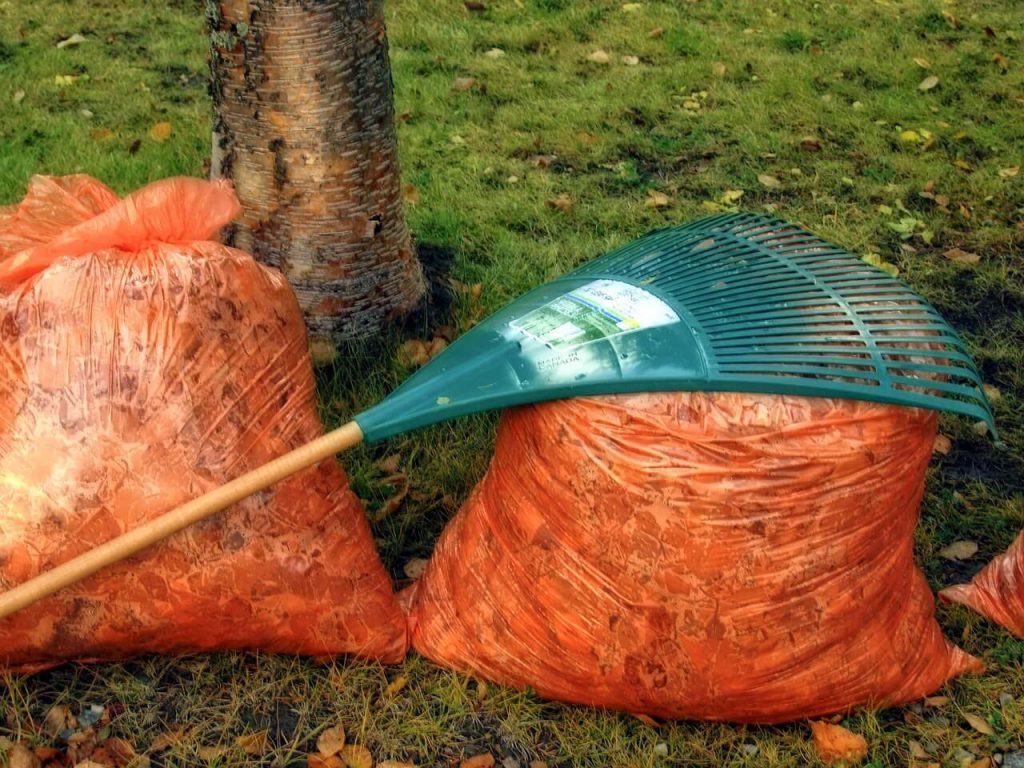
A rake or a leaf blower can work great. But don’t use a rake with metal tines on your patio, driveway, or other hard surfaces, though. It can scratch the surface or at least the sealer on the surface. Instead, stick to a blower or a broom for those areas.
For leaves on your lawn, you could also turn them into mulch with a lawnmower that has a mulching attachment. That allows you to recycle them and put them to good use.
Clean Gutters
Leaves and dirt accumulate in your gutters, too. They block the flow of water if not removed. That can lead to all kinds of problems for your home. Water trapped in gutters can freeze over winter, and this added weight can separate the gutter from the roof. It can even cause water to back up into your roofing material, leading to damage and possible flooding.
There are tools available to help brush leaves out of the gutter without needing to climb a ladder. Of course, that only works if you have a low roof. If you can safely use a ladder, though, it’s usually more effective. And if you cannot do the job yourself, you may want to hire a contractor to do it. A good sign that it needs to be done is if you had icicles hanging from the gutter last winter.
Take Care Of Your Grass
You’ll also be winding down your lawn-mowing routine in the early part of fall. It may seem to happen naturally. After all, the grass isn’t growing as fast. Eventually, it doesn’t need to be cut at all. It’s storing up energy to keep itself alive during the winter.
Dethatching is another activity for this part of the year. Thatch is the buildup of grass clippings on your lawn over time. Letting clippings fall back onto the lawn can be a good thing; they help supplement your fertilizer. However, the amount of clippings is often more than can decompose. The dry grass then forms a mat that prevents air and water from reaching the grass’s roots.
A special dethatching rake can help pull the thatch loose and allow your grass to breathe again. You may not have to do this every year, but it’s important to keep your eye on it.
You should also overseed your lawn as summer turns to fall. This will give the new grass the time it needs to enjoy fall rains and to concentrate on developing strong roots.
Early fall is also a time to feed the grass so it has the energy it needs to make it through winter. Fertilization schedules can vary but in the Toronto area, the middle of October is usually the best time for this last feeding of the year.
Transplant Plants
If you need to transplant any plants or shrubs in your garden, now is the time. Cooler fall weather and rain will help them take better in their new location. Remember to give them some tender loving care since the move can be quite a shock! Even if it rains, be sure to give them extra water to make the transition easier.
Plant Spring Bulbs
Fall can also be planting season for a lot of bulbs that will sprout in spring. They need colder weather so they can stay dormant all winter. That will allow them to preserve the energy they need to burst forth in full color in spring!
Daffodils fit into this group. So do allium and dog’s tooth violet, among others.
Mulch
After all that trouble picking up leaves, it’s time to put some down. Either leaves or another form of mulch will help provide insulation for bushes, plants, and trees.
Why clean up the leaves in the first place? Well, you don’t want them everywhere. You also have to apply fertilizer to your plants first. Afterward, you can apply your mulch where needed.
Trim Bushes
Help your bushes and trees save energy and stay healthy by trimming them back. Remove any broken or dead sections.
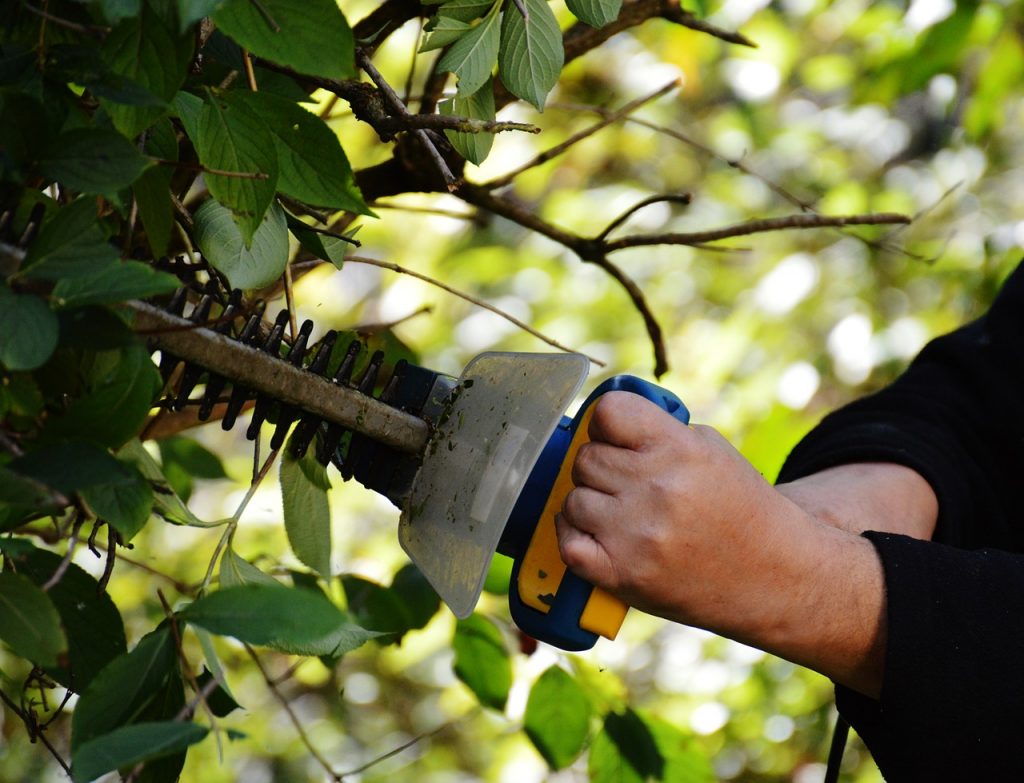
You can also trim to shape them. Rhododendrons and hydrangeas are among the top candidates for trimming at this time of year.
Scrub And Store Patio Furniture
Chances are that you’ll be cutting back on the use of your yard. And most patio furniture will survive longer if it doesn’t have to withstand winter weather. That makes fall a great time for cleaning the furniture and moving it to the garage, shed, or basement.
If you have patio umbrellas, seat cushions, or other items that can absorb water, be sure to let them dry thoroughly before storing them. Otherwise, mold will grow over the winter.
Wash Down Patio And Other Features
Now that the patio’s clear, it’s a great time to clean it more thoroughly. Power washing can help get grime and dirt out of joints, edges, and corners. If you have a concrete surface and find any stains, you can use a mild detergent to clean it up.
If you’d like more information on caring for your stamped concrete over the winter, be sure to check our article!
Clean And Store Tools
Before finishing up, you’ll want to make sure to clean all your tools, too! If they need any maintenance, it’s good to take care of it now, as well. That way they’ll be ready to go next spring – and you won’t forget about that loose screw!
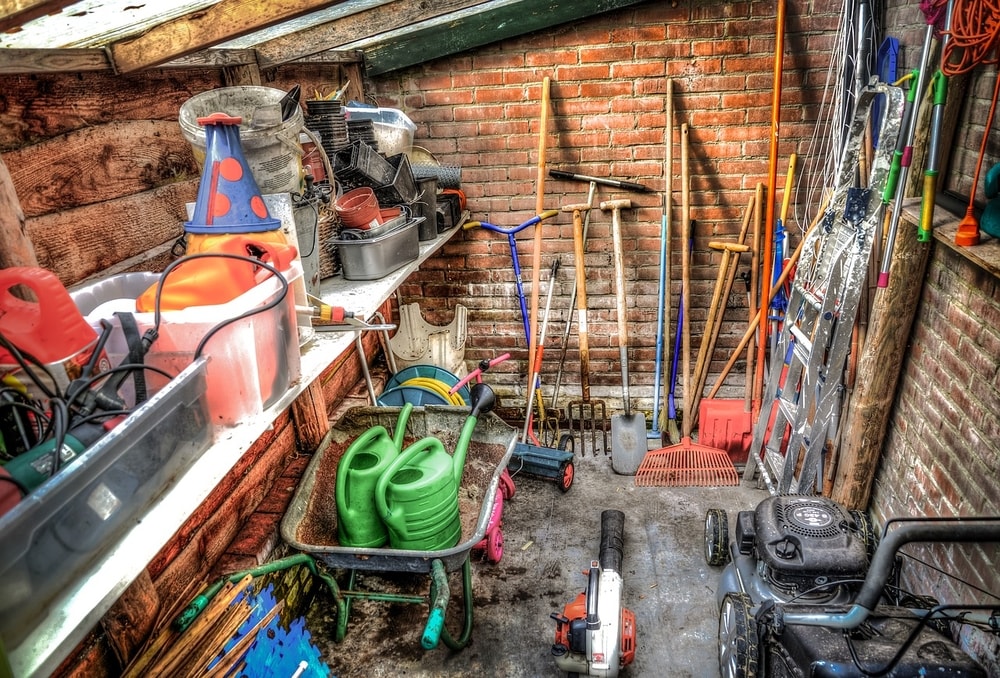
Hose them down and make sure you’ve removed any dirt. Let them dry thoroughly, then store them in a cool, dry place.
For smaller tools like trowels, you can slip their blades into a can filled with sand soaked in motor oil. This helps condition the blades.
Store Hoses
Finally, it’s time to close everything up. You’ve been cleaning and hosing things down this whole time. Once you’re done with that, though, you should disconnect your hose, drain it, and store it.
If your outdoor faucet has a separate shutoff valve inside the house, it’s always good to close that valve as well. After that, open the faucet and allow any water to drain.
Conclusion
Fall does bring a lot of outdoor chores, but they’re all intended to help your lawn and garden grow beautifully next year and to preserve your outdoor furnishings. Spending a couple of Saturday mornings on the work is usually enough to get it all done. You’ll be able to enjoy the changing weather and know that everything’s in good shape before the first snowfall!
